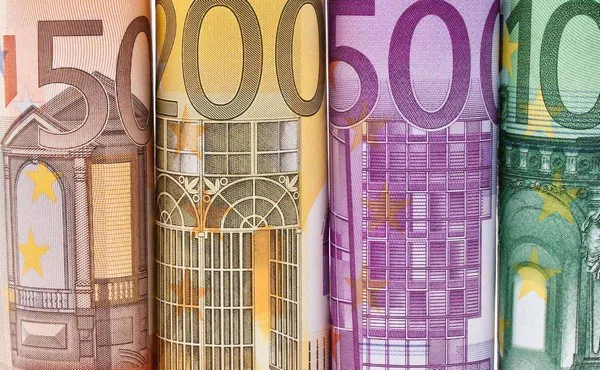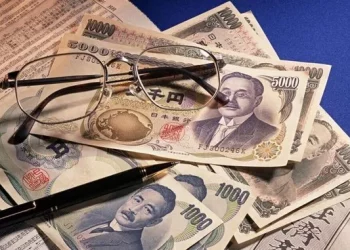The relationship between the British pound (GBP) and the U.S. dollar (USD) is one of the most closely watched and influential in global financial markets. When we say one currency is “stronger” than another, it often refers to its exchange rate value and, by extension, its purchasing power in foreign exchange (FX) markets. For example, if £1 equals $1.30, then the pound is “stronger” than the dollar because one pound can buy more than one U.S. dollar.
But why is the British pound generally stronger than the dollar? To understand this question fully, we must examine multiple factors, including historical perspectives, economic fundamentals, interest rate differentials, and market sentiment. This article will dive into these aspects to explore why the British pound often holds a higher value than the U.S. dollar, despite being the currency of a smaller economy.
1. Historical Perspective and Legacy Strength of the British Pound
The British pound has a long, rich history as one of the world’s most significant and valuable currencies. First issued over a thousand years ago, it is the oldest currency still in use today. For centuries, the British Empire was the largest and most powerful economy, establishing the pound sterling as the world’s reserve currency. It wasn’t until the 20th century that the U.S. dollar took over as the dominant global reserve currency.
Historically, the pound’s higher valuation is partially due to this legacy. During the British Empire’s height, the pound was widely trusted and accepted across the globe. Despite the British Empire’s decline, the pound retained a degree of value and prestige. Today, while the dollar is the global reserve currency, the pound’s historical importance continues to play a psychological role, supporting its relative strength.
2. Economic Fundamentals: Comparing the U.K. and U.S. Economies
The economic fundamentals of the United Kingdom and the United States significantly impact the pound-to-dollar exchange rate.
GDP and Economic Size
The U.S. economy is significantly larger than the U.K. economy, with a GDP of approximately $25 trillion compared to the U.K.’s roughly $3 trillion. Larger economies often wield stronger currencies due to greater global influence and higher trade volumes. However, the pound remains stronger due to differences in economic structures, inflation rates, and monetary policies.
Inflation Rates
Inflation reduces purchasing power, eroding a currency’s strength. The U.K. has traditionally maintained lower inflation rates than the U.S., which has helped preserve the pound’s value. Although recent years have seen spikes in inflation due to global pressures, the Bank of England (BoE) has actively managed these fluctuations to maintain long-term stability. The U.S., by contrast, sometimes experiences more variable inflation, particularly during times of high economic activity, which can impact the dollar’s strength relative to the pound.
Trade Balance
The U.S. has a persistent trade deficit, importing more goods than it exports. This constant outflow of dollars to pay for imports can weaken the dollar, especially against currencies from countries with trade surpluses. The U.K. also runs a trade deficit but on a smaller scale.
3. Interest Rate Differentials and Monetary Policy
One of the most significant factors influencing exchange rates is the interest rate differential between countries. Central banks, like the BoE and the Federal Reserve, use interest rates as a tool to control inflation and stimulate or cool their economies. Higher interest rates make a currency more attractive to investors, as it offers higher returns on assets denominated in that currency.
The Bank of England (BoE) vs. The Federal Reserve (Fed)
In recent years, both the BoE and the Fed have adopted low-interest-rate policies to stimulate their respective economies, especially during times of economic downturn. However, their approach differs based on their economic outlooks. When the BoE raises rates higher than the Fed, GBP tends to appreciate against USD, as investors seek higher returns from British assets.
Quantitative Easing (QE) Programs
Both the U.K. and U.S. have engaged in QE during economic downturns, where central banks purchase government bonds to inject liquidity into the economy. While QE can stimulate growth, it can also devalue a currency due to the increased supply of money. However, if one country engages in more aggressive QE than the other, it can widen the value gap between their currencies. Historically, the Fed has engaged in QE on a larger scale than the BoE, which has sometimes put downward pressure on the dollar relative to the pound.
4. Geopolitical Stability and Market Sentiment
Market sentiment and geopolitical stability play crucial roles in currency strength. Investors tend to favor currencies from politically stable and economically reliable countries, and both the U.S. and U.K. have historically been regarded as safe investment destinations.
Brexit and Market Uncertainty
Brexit introduced significant uncertainty into the U.K. economy, which initially weakened the pound due to concerns over trade restrictions, supply chain issues, and potential economic isolation. Over time, however, as trade agreements solidified and the British economy adapted, market confidence in the pound stabilized, restoring some of its value against the dollar. This situation illustrates that political and economic stability—or perceived stability—can have both short- and long-term effects on currency strength.
Safe-Haven Currency Status
During times of global uncertainty, the dollar is often seen as a “safe-haven” currency, attracting investors seeking stability. This dynamic can lead to a temporary surge in dollar strength during crises, such as during the COVID-19 pandemic. The pound also holds some safe-haven appeal, particularly due to the stability of the U.K.’s political system, but the dollar’s larger economic base generally gives it an advantage as the global safe-haven currency.
5. Speculation and FX Market Behavior
The foreign exchange market is the largest and most liquid market globally, with over $6 trillion traded daily. In this environment, speculation and market psychology significantly influence currency values.
Hedge Funds and Institutional Investors
Large institutional investors, including hedge funds and asset managers, often speculate on the GBP/USD pair. These traders look at economic data, central bank policies, and geopolitical developments to forecast currency movements. For instance, if investors expect the BoE to hike interest rates, they may buy pounds, causing the GBP to appreciate against the USD. Conversely, if the Fed is expected to raise rates, it may lead to a stronger dollar.
Sentiment-Based Movements
In times of positive sentiment about the British economy, the pound tends to strengthen. Conversely, pessimism, especially during uncertain periods like Brexit or economic slowdowns, can weaken the pound. These sentiment-driven shifts can be short-lived but still impact exchange rates. The dollar’s strength similarly fluctuates based on U.S. economic sentiment, often tied to employment data, inflation reports, and central bank guidance.
6. Currency Valuation and Purchasing Power Parity (PPP)
Purchasing Power Parity (PPP) is a theory that suggests that in the long term, exchange rates should adjust so that identical goods cost the same in different countries. While PPP is rarely an exact measure in the short term due to market fluctuations, it offers insight into whether a currency is overvalued or undervalued.
GBP vs. USD in PPP Terms
According to many PPP studies, the pound has historically been overvalued compared to the dollar. This could imply that despite being “stronger,” it may not necessarily offer more real-world purchasing power when buying goods and services. However, the factors that determine PPP are complex, and many investors and analysts view the pound’s higher nominal value as an indication of a stronger currency in a nominal, rather than real, sense.
7. The Role of Currency Supply and Demand
Currency strength is, at its core, a matter of supply and demand. The demand for a currency depends on factors such as foreign direct investment (FDI), global reserve holdings, and demand for exports. Since the dollar is the world’s primary reserve currency, it is in constant demand for international trade and finance. Despite this, the pound’s limited supply compared to the dollar’s massive circulation (given the larger U.S. economy and dollar’s use as a reserve currency) can lead to a higher nominal value for GBP relative to USD.
Conclusion
The British pound’s strength compared to the dollar is the result of a combination of historical, economic, and geopolitical factors. While the U.S. economy is significantly larger and the dollar serves as the global reserve currency, the pound maintains a higher exchange rate due to its historical importance, controlled currency supply, central bank policies, and investor perceptions.Both currencies will continue to play central roles in the global economy, and understanding the forces behind their relative values offers valuable insight into future forex market trends.
Related Topics:



























